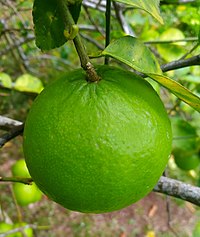
Genetic and individual assignment of tetraploid green sturgeon with SNP assay data
Sign Up to like & getrecommendations! Published in 2017 at "Conservation Genetics"
DOI: 10.1007/s10592-017-0963-5
Abstract: Polyploid organisms pose substantial obstacles to genetic analysis, as molecular assay data are usually difficult to evaluate in a Mendelian framework. Green sturgeon (Acipenser medirostris) is a tetraploid species and is facing significant conservation challenges,… read more here.
Keywords: genetic individual; sturgeon; data used; green sturgeon ... See more keywords

Comparative linkage mapping of diploid, tetraploid, and hexaploid Avena species suggests extensive chromosome rearrangement in ancestral diploids
Sign Up to like & getrecommendations! Published in 2019 at "Scientific Reports"
DOI: 10.1038/s41598-019-48639-7
Abstract: The genus Avena (oats) contains diploid, tetraploid and hexaploid species that evolved through hybridization and polyploidization. Four genome types (named A through D) are generally recognized. We used GBS markers to construct linkage maps of… read more here.
Keywords: linkage; avena; hexaploid; tetraploid ... See more keywords

Mitotic instability in triploid and tetraploid one-year-old eastern oyster, Crassostrea virginica, assessed by cytogenetic and flow cytometry techniques.
Sign Up to like & getrecommendations! Published in 2018 at "Genome"
DOI: 10.1139/gen-2017-0173
Abstract: For commercial oyster aquaculture, triploidy has significant advantages. To produce triploids, the principal technology uses diploid × tetraploid crosses. The development of tetraploid brood stock for this purpose has been successful, but as more is… read more here.
Keywords: non mosaic; triploid; crassostrea virginica; tetraploid ... See more keywords

Revisiting the evolution of the North American tetraploid treefrog (Hyla versicolor).
Sign Up to like & getrecommendations! Published in 2020 at "Genome"
DOI: 10.1139/gen-2020-0031
Abstract: Hyla chrysoscelis and H. versicolor, are common treefrogs in eastern North America and are a cryptic diploid-tetraploid species pair. They are morphologically identical but H. versicolor is a tetraploid. They can be identified acoustically by… read more here.
Keywords: chrysoscelis; versicolor; revisiting evolution; tetraploid ... See more keywords

Chromosome divergence during evolution of the tetraploid clawed frogs, Xenopus mellotropicalis and Xenopus epitropicalis as revealed by Zoo-FISH
Sign Up to like & getrecommendations! Published in 2017 at "PLoS ONE"
DOI: 10.1371/journal.pone.0177087
Abstract: Whole genome duplication (WGD) generates new species and genomic redundancy. In African clawed frogs of the genus Xenopus, this phenomenon has been especially important in that (i) all but one extant species are polyploid and… read more here.
Keywords: xenopus; clawed frogs; tetraploid; zoo fish ... See more keywords

Heterogeneity in sarcoma cell lines reveals enhanced motility of tetraploid versus diploid cells
Sign Up to like & getrecommendations! Published in 2017 at "Oncotarget"
DOI: 10.18632/oncotarget.14291
Abstract: Soft tissue sarcomas with complex genomics are very heterogeneous tumors lacking simple prognosis markers or targeted therapies. Overexpression of a subset of mitotic genes from a signature called CINSARC is of bad prognosis, but the… read more here.
Keywords: cell lines; sarcoma cell; tetraploid; cell ... See more keywords

Intermediate Inheritance with Disomic Tendency in Tetraploid Intergeneric Citrus × Poncirus Hybrids Enhances the Efficiency of Citrus Rootstock Breeding
Sign Up to like & getrecommendations! Published in 2020 at "Agronomy"
DOI: 10.3390/agronomy10121961
Abstract: Rootstocks are crucial for the sustainability of the citrus industry worldwide. Diploid intergeneric Citrus × Poncirus hybrids have contributed considerably to citrus rootstock improvement and their tetraploid (doubled-diploid) forms are important resources for the creation… read more here.
Keywords: inheritance; rootstock; poncirus; intergeneric citrus ... See more keywords

Asymmetric clustering of centrosomes defines the early evolution of tetraploid cells
Sign Up to like & getrecommendations! Published in 2020 at "eLife"
DOI: 10.7554/elife.54565
Abstract: Tetraploidy has long been of interest to both cell and cancer biologists, partly because of its documented role in tumorigenesis. A common model proposes that the extra centrosomes that are typically acquired during tetraploidization are… read more here.
Keywords: asymmetric clustering; centrosomes defines; extra centrosomes; tetraploid ... See more keywords